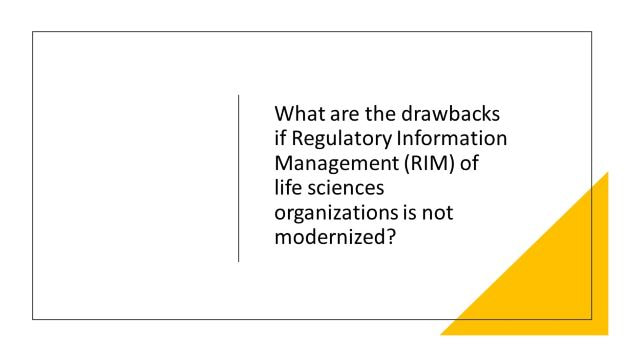TSCA
The TSCA (Toxic Substance Control Act) program has its drawbacks. The most pressing of these is the lack of a comprehensive life sciences regulatory information system. Without this, regulatory agencies are unable to make sound decisions and comply with deadlines.
Regulatory changes
Regulatory changes are happening all the time and the chemicals and life sciences industry cannot afford to not upgrade its information system.
Increasing compliance costs and increased regulatory scrutiny are only a few of the challenges facing the industry. However, companies must consider their compliance activities as a core part of their overall business strategy.
Despite the pressures to perform more with fewer resources, technological accelerators can boost the effectiveness and efficiency of compliance operations. This will ultimately improve the compliance organization's ability to protect and deliver value.
For example, a modernized information system will help companies create a new culture of proactivity. This will lead to fewer risks, greater opportunities for business growth, and a better brand image. Without such a modernized information system, companies may face increased liability and risk, which could lead to more delays in product approvals, license withdrawals, financial penalties, and criminal penalties.
Clarity of expectations between sponsors and service providers
One of the benefits of a life sciences regulatory information system is the ability to provide information to sponsors and service providers at the same time. Clearer expectations can lead to increased efficiency and quality of outsourced activities. It is also important to ensure that service providers are accountable for their work and that they accept additional legal risks. If the life sciences facility’s regulatory information system is not modernized, it could hinder efficiency by causing administrative barriers for sponsors and service providers.
In addition to streamlining reporting requirements, a life sciences regulatory information system may also reduce the number of duplicate reports. By establishing a single registry for a specific product, sponsors can avoid the risk of reporting AEs for multiple products. To ensure compliance, sponsors must determine what types of adverse events should be reported and by whom. Otherwise, they risk underreporting adverse events.
If the life sciences regulatory information system is not modernized, a sponsor may experience a number of different adverse events. These can range from expected- to- unexpected. For example, a sponsor may be required to submit non-serious events in a safety update. It may also have to coordinate the cut-off date for registry data.
Cost of compliance
The evolution of the regulatory process is transforming the pharmaceutical industry, and this change is starting to extend to the medical device industry.
Now Biopharma and MedTech companies are rethinking compliance processes, the role of digital transformation and the importance of investing in modern data management for business growth.
Regulatory information systems need to be updated and modernized to meet the demands of today's customers and industry regulations. A modernized system can streamline processes and save time. Companies must look for synergies between these functions and seek out areas to eliminate waste. Many companies lack the horizontal integration needed to achieve optimal efficiency. Their disparate systems can result in duplicative spending, and lack of automation can hamper operations.
While large companies with a large number of products and large amounts of data tend to adopt cloud-based automation and software-as-a-service platforms, smaller biotechnology companies may have difficulty finding scalable, affordable, and agile solutions.
Related Reading:
- Operational Excellence FAQ: Why should you modernize regulatory information management in life sciences organizations?
- Challenges in Modernizing Life Sciences Regulatory Information Management Systems
- USFDA Guidance on Life Sciences Regulatory Information Management
- Economic Impact of Life Sciences Regulatory Information Management
- Modernize regulatory information management to improve operational excellence in life science organizations
- How to Overcome Challenges in Life Sciences Regulatory Information Management
- Benefits of modernizing life sciences Regulatory Information Management
- Transitioning from Computer Software Validation (CSV) to Computer Software Assurance (CSA)
Follow Shruti on Twitter, Facebook, YouTube, LinkedIn
Categories: Life Sciences | Operational Excellence
Keywords and Tags:
#computersoftwareassurance #TSCA #CSVtoCSA #lifesciences #continuousimprovement #operationalexcellence #continuousimprovementforlifescienceindustry #changemanagement #EPA #environmentprotectionagency





















